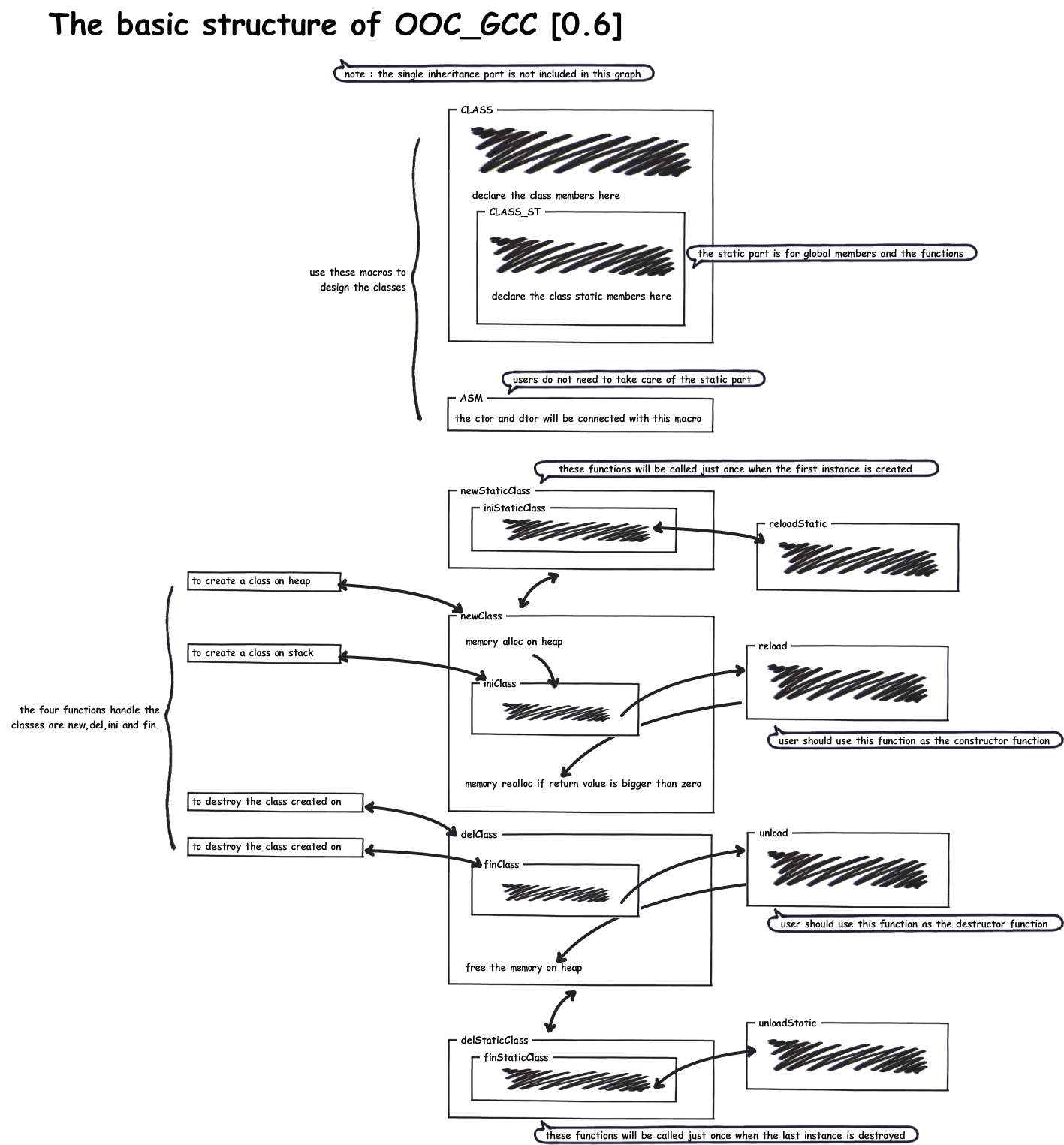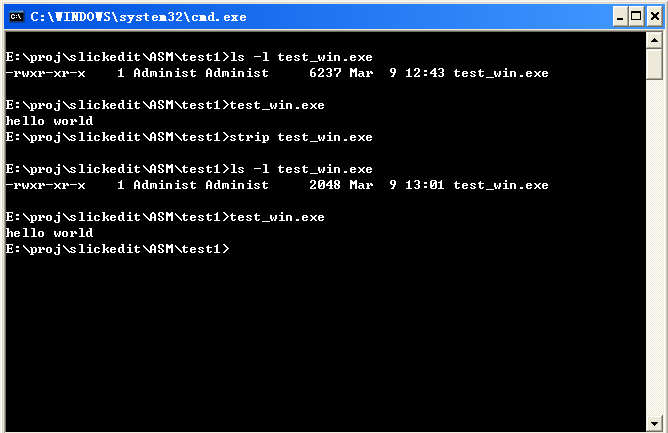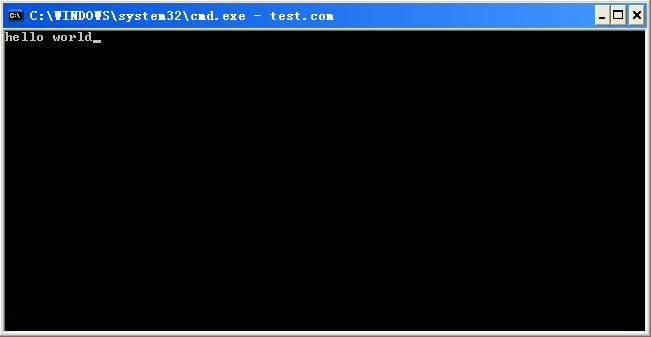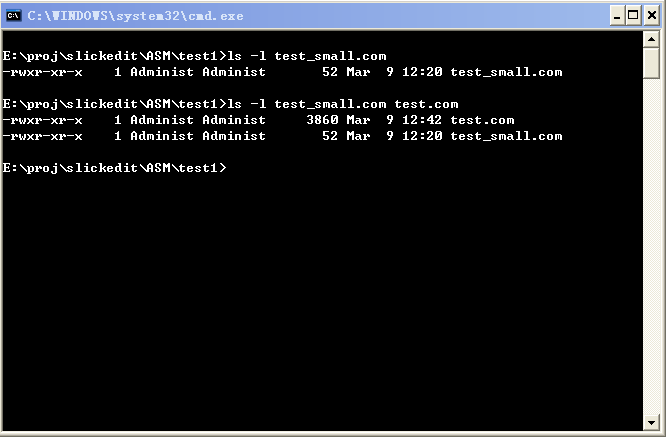OOC-GCC特性介绍与使用说明
Posted on Sat, 11 Jun 2011 22:47:50 -1100OOC-GCC 特性介绍
•核心部分仅仅是"宏",所以编译的时候更加灵活.
•两层宏定义,底层的"宏"完全采用英文全称,表意清晰.同时严格控制每个宏的定义,尽力做到不烂用.
•对于OO的模拟有构造也有析构,宏的定义具有对称性,同时符合语言规则,如表述表示 类的"名词" + 表示方法的"动词+名词".
•类的定义多数采用全开放的形式,这也使得现在的版本和VC兼容.
•方便和C++的配合.
•相对完整的类空间与实例(对象)空间的模拟,类空间的构造和析构通过类似引用计数的方法对开发者"透明".
•相对完整的单根继承的模拟,无需的在子类的构造/析构函数中显示地调用父类的构造/析构函数.
•和主流C编译工具兼容,无论GCC或是M$的编译工具都可无warning编译通过.
----实际测试为GCC 32bit 4.5.2 MinGW环境以及Ubuntu环境,64bit的找别人帮忙测试过,可能会有几个关于size_t的warning
-----微软的是编译器 32-bit C/C++ Optimizing Compiler Version 15.00.30729.01 for 80x86
-----微软的是编译器 32-bit C/C++ Optimizing Compiler Version 15.00.30729.01 for 80x86
•提供较为便利的调试层(仅针对GCC),
----提供更加方便的断言宏
----提供针对纯C的异常捕获机制的模拟
----提供和堆内存分配的日志监测
----提供仪表函数(就是监控每一个函数的调用)日志监测
----提供手动调用日志监测
----日志输出格式较为简洁,配合addr2line及graphviz等工具可以较为方便的生成图表
•提供一些常规的函数(这一部分是独立出来的)
•文件结构较为简洁,且功能上比较独立,同时有OOCfg.h中定义了一些宏开关方便一些特性的开启与停用.
•提供独立的单文件宏OOC.h,方便Release版的使用.
•提供了一些测试用例,以及在win下配合MinGW及VC编译用的批处理,*nix的GCC使用时改一下即可
-------------------------------------------------------------------------------------------------------------------------------------
关于OOC-GCC中宏的使用
类的设计(模块化的编程应在.h文件中使用)
假定有一个名为"A"的"类" CLASS(A){ ...... 这里为实例成员 STATIC(A); ...... 这里是类成员(实际结构体为struct _StA,并被重定义为StA) }; 假定有一个名为"B"的继承了上面"B"的"类" CLASS_EX(A,B){ ....... STATIC_EX(A,B); ....... }; 注意继承时,前面是父类,后面是要定义的子类.
类的构造与析构(模块化的编程应在.c文件中使用)
static int A_reload(A *THIS,void *p){ THIS->.... 这里使用第一个参数来初始化实例成员 return 0; } static int A_reloadSt(StA *THIS,void *p){ THIS->.... 这里使用第一个参数来初始化类成员 return 0; } static int A_unload(A *THIS,void *p){ THIS->.... 这里使用第一个参数来析构实例成员 return 0; } ASM(A,A_reload,A_unload,A_reloadSt,NULL) 注意上面最后一个参数为类成员的析构 使用NULL是为了说明无需某个函数时,可以不设置
类的使用
普通类"A"的使用 A *a=NEW0(A); //声明第一个A的实例时调用StA和A的构造, //以后再声明A的实例只调用A的构造 StA *fA=ST(a); fA->someFunc(a,someParam); DELETE0(a); //销毁A的实例时调用A的析构 //当销毁显存的最后一个A的实例时, //调用A和StA的构造 带有继承的类"B"的使用 B *b=NEW0(B); //注意父类的构造会自动调用 StB *fB=ST(b); fB->someFunc(b,someParam); StA *fA=ST(b); fA->someFunc(b,someParam); 使用父类的方法 DELETE0(b); //无需知道b的具体类型时A或B,都会调用正确的析构 //如果是A的指针,则调用A的析构,如果是B的指针则调用B和A的析构
--------------------------------------------------------------------------------------------------------------------------------------------------------
关于OOC-GCC中单根继承的说明
假设我们定义四个类,A,B,C,D,并且后面的类继承前面的类,则有
CLASS(A){ STATIC(A); }; static int A_reload(A *THIS,char *name){ printf("%s\n",__FUNCTION__); return 0; } static int A_unload(A *THIS,void *PARAM){ printf("%s\n",__FUNCTION__); return 0; } static int A_reloadSt(StA *THIS,char *name){ printf("%s\n",__FUNCTION__); return 0; } static int A_unloadSt(StA *THIS,void *PARAM){ printf("%s\n",__FUNCTION__); return 0; } ASM(A,A_reload,A_unload,A_reloadSt,A_unloadSt) CLASS_EX(A,B){ STATIC_EX(A,B); }; static int B_reload(B *THIS,char *name){ printf("%s\n",__FUNCTION__); return 0; } static int B_unload(B *THIS,void *PBRBM){ printf("%s\n",__FUNCTION__); return 0; } int B_reloadSt(StB *THIS,char *name){ printf("%s\n",__FUNCTION__); return 0; } static int B_unloadSt(StB *THIS,void *PBRBM){ printf("%s\n",__FUNCTION__); return 0; } ASM_EX(A,B,B_reload,B_unload,B_reloadSt,B_unloadSt) CLASS_EX(B,C){ STATIC_EX(B,C); }; static int C_reload(C *THIS,char *name){ printf("%s\n",__FUNCTION__); return 0; } static int C_unload(C *THIS,void *PCRCM){ printf("%s\n",__FUNCTION__); return 0; } static int C_reloadSt(StC *THIS,char *name){ printf("%s\n",__FUNCTION__); return 0; } static int C_unloadSt(StC *THIS,void *PCRCM){ printf("%s\n",__FUNCTION__); return 0; } ASM_EX(B,C,C_reload,C_unload,C_reloadSt,C_unloadSt) CLASS_EX(C,D){ STATIC_EX(C,D); }; static int D_reload(D *THIS,char *name){ printf("%s\n",__FUNCTION__); return 0; } static int D_unload(D *THIS,void *PDRDM){ printf("%s\n",__FUNCTION__); return 0; } static int D_reloadSt(StD *THIS,char *name){ printf("%s\n",__FUNCTION__); return 0; } static int D_unloadSt(StD *THIS,void *PDRDM){ printf("%s\n",__FUNCTION__); return 0; } ASM_EX(C,D,D_reload,D_unload,D_reloadSt,D_unloadSt)
上面的代码再调用相关的函数是会打印出对应的__FUNCTION__,
printf("\n*****************NEW A\n"); A *a=NEW0(A); printf("\n*****************NEW B\n"); B *b=NEW0(B); printf("\n*****************NEW C\n"); C *c=NEW0(C); printf("\n*****************DEL C\n"); DELETE0(c); printf("\n*****************DEL B\n"); DELETE0(b); printf("\n*****************DEL A\n"); DELETE0(a); printf("\n*****************NEW D\n"); D *d=NEW0(D); printf("\n*****************DEL D\n"); DELETE0(d);
如果像上面这样调用,则会有如下输出
*****************NEW A A_reloadSt A_reload *****************NEW B A_reload A_reloadSt B_reloadSt B_reload *****************NEW C A_reload B_reload A_reloadSt B_reloadSt C_reloadSt C_reload *****************DEL C C_unload B_unload A_unload A_unloadSt B_unloadSt C_unloadSt *****************DEL B B_unload A_unload A_unloadSt B_unloadSt *****************DEL A A_unload A_unloadSt *****************NEW D A_reloadSt A_reload A_reloadSt B_reloadSt B_reload A_reloadSt B_reloadSt C_reloadSt C_reload A_reloadSt B_reloadSt C_reloadSt D_loadSt D_load *****************DEL D D_unload C_unload B_unload A_unload A_unloadSt A_unloadSt B_unloadSt A_unloadSt B_unloadSt C_unloadSt A_unloadSt B_unloadSt C_unloadSt D_unloadSt
构造的时候遵循先父再子,析构的时候遵循先子再父.
另外关于静态部分的使用,在某个类第一次使用时自动的调用静态构造
当销毁某个类的最后一个实例时自动的调用静态析构


















